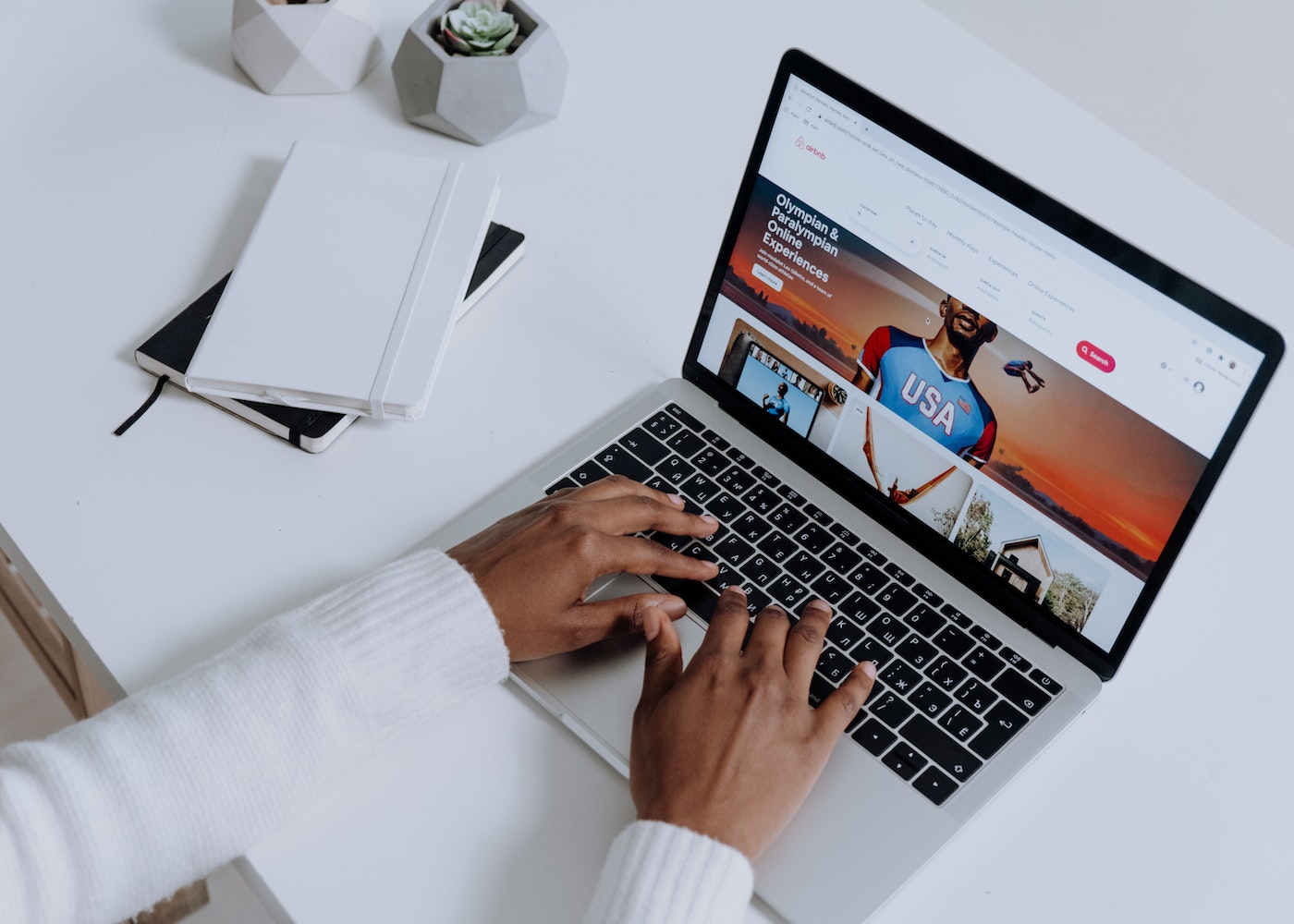Have you ever clicked on an image, expecting it to take you
to a website, only to find that nothing happened? Or mistakenly clicked on an
email address, thinking it was a regular link? Differentiating between
different types of links is crucial for a seamless user experience. In this
blog post, we will explore how to distinguish the linking of an image, email
address, and website, ensuring that you never get confused or frustrated again.
Understanding the Basics of Linking
Differentiating between different types of links is
essential for a seamless user experience. When navigating websites or
interacting with content, it is important to know the purpose and function of
each type of link to avoid confusion and frustration.
Differentiating the Linking of Images
When it comes to website navigation, understanding how to
recognize and click on image links can greatly enhance the user experience.
Image links are often used for visual appeal and can lead to additional content
or actions. Here are some key points to keep in mind:
Look for visual cues: Image links are typically displayed as
clickable images, distinguishable by their appearance from regular text. They
often appear in the form of buttons, banners, or thumbnails.
Hover effects: Many websites apply hover effects to image
links, such as changing the cursor to a pointing hand or adding a subtle
animation when hovered over. This helps users identify that the image is indeed
clickable and serves as a link.
Context and relevance: Consider the context of the image and
its relevance to the surrounding content. Image links are often used to provide
further information or related resources on a specific topic.
By keeping these points in mind, you can easily differentiate image links from other types of links, improving your overall browsing experience.

Identifying Linked Email Addresses
Linked email addresses are commonly used on websites to
allow users to contact the website owners or authors. It is important to be
able to recognize and differentiate these email links to avoid any accidental
navigation to email clients.
Here are some tips on how to identify linked email
addresses:
1. Look for the "mailto:" prefix: Linked email
addresses typically start with the "mailto:" prefix. For example, if
you see a link that reads "mailto:example@example.com," it means
clicking on that link will open your default email client with the recipient's
email address pre-filled.
2. Hover over the link: Hovering your cursor over the
linked email address will usually display a tooltip or a status message that
indicates it is an email link. This can help you differentiate it from other
types of links.
3. Recognize the email icon: Websites often use an email
icon next to the linked email address to visually differentiate it. This can be
an envelope icon or an icon with an "@" symbol. The icon serves as a
visual cue to indicate that clicking on it will open an email client.
By being familiar with these cues, you can easily recognize
and click on linked email addresses without confusion or frustration.
Recognizing Linked Websites
One essential aspect of navigating websites effectively is
being able to identify linked websites. These links can lead users to external
sources of information or services that complement the content they are
currently viewing.
Linked websites are usually indicated through underlined
text or a different color, which sets them apart from regular text. When
clicking on a website link, a new tab or window is typically opened to avoid
disrupting the user's browsing experience on the current page.
It's crucial to understand how to recognize and interact
with linked websites, as they can provide valuable resources or further explore
a topic of interest. By familiarizing yourself with the visual cues and
behaviors associated with website links, you can navigate the web with ease and
access the information you need.
The Importance of Proper Linking Practices
Proper linking practices play a crucial role in enhancing
the user experience and making websites more accessible. When links are structured
well, it not only improves website navigation but also optimizes search engine
rankings. Here are some reasons why proper linking practices are important:
1. User-Friendly Navigation: Well-structured links make it
easier for users to navigate through a website and find the information they
are searching for. When links are clear and intuitive, users can quickly
understand where they will be directed.
2. Accessibility: Proper linking practices enhance the
accessibility of websites for individuals with disabilities. By utilizing
appropriate link descriptions and attributes, users who rely on assistive
technologies can better understand the purpose and destination of each link.
3. Improved Search Engine Optimization (SEO): Search
engines consider the quality and relevancy of links when ranking websites.
Properly formatted and relevant links can help improve a website's visibility
in search results, driving more organic traffic.
4. Reduced Bounce Rates: When users encounter broken or
misleading links, they are more likely to leave a website without exploring
further. By ensuring that links are accurate and lead to valuable content, the
chances of users staying on your website increase.
In summary, adhering to proper linking practices not only
benefits website visitors, but also improves overall website performance and
user satisfaction. It is important to pay attention to link placement, design,
and descriptions to provide a user-friendly linking experience.
Common Misconceptions about Linking
When it comes to linking, there are quite a few
misconceptions that can lead to confusion or misuse. Let's debunk some of these
common misconceptions to better understand and utilize different types of
links.
Hyperlinks are the same as email links
One common misconception is that all links are the same,
whether they lead to a webpage or an email address. In reality, hyperlinks and
email links serve different purposes and should be treated differently.
Clicking on an image will always take you to a website
Another misconception is that clicking on an image will
always lead to a website. While image links can certainly redirect to webpages,
they can also trigger actions, open additional content, or even serve as
navigation elements within a website.
All linked email addresses will automatically open email clients
Linked email addresses can be a convenient way to contact
website owners or authors, but it's important to note that not all email links
will automatically open email clients. Some websites may have different actions
associated with email links, such as opening a contact form.
Website links always open in the same tab or window
Many people assume that clicking on a website link will
always open a new tab or window. However, the behavior of website links can
vary based on how they are programmed. Some links may open in the same tab,
while others may open in a new tab or window to prevent users from navigating
away from the current page.
By dispelling these misconceptions and understanding the differences between hyperlinks, email links, and image links, we can use linking effectively and avoid confusion in our online experiences.

Effective Strategies to Differentiate Linking
1. Use visual cues or hover effects:
Consider adding an underline or a border around hyperlinks
to differentiate them from regular text.
Change the cursor to a pointer when hovering over a link to
indicate it is clickable.
Apply a different color to visited links to help users keep
track of their navigation.
2. Provide clear instructions or labeling:
Label email links with the email address, such as
"Contact us: email@example.com".
Label image links with a descriptive text or alt attribute,
indicating their functionality or destination.
Use specific anchor text for website links to give users an
idea of where they will be directed.
3. Use different link styles:
Apply a unique style, such as bold or italicized text, to
differentiate email links.
Use a button-style design or a stylized icon for image links
to distinguish them from regular text links.
Consider using a different color or font size for website
links to make them stand out.
4. Adjust link behavior:
Open website links in a new tab or window to prevent users
from losing their current page.
Add a confirmation dialog when clicking on email links to
avoid unintentional email client launches.
Highlight a selected image link or change its appearance on
click to provide feedback to the user.
5. Implement accessible linking:
Ensure that linked images have alt attributes that describe
their purpose or content.
Use clear and concise link text that is descriptive and
makes sense out of context.
Test the link accessibility by using a screen reader or
other assistive technologies.
Tools and Techniques for Linking Differentiation
When it comes to differentiating the linking of an image,
email address, and website, there are several tools and techniques that can be
implemented:
1. HTML Attributes and CSS Classes
One way to distinguish these different types of links is by
utilizing HTML attributes and CSS classes. For image links, the alt attribute
can be used to provide a description of the image link. Additionally, a
specific CSS class can be assigned to each type of link, allowing for custom
styling and visual cues.
2. Link Tracking and Analytics Tools
Implementing link tracking and analytics tools can provide
valuable insights into user interaction with different types of links. These
tools can track click-through rates and user behavior, helping to further
optimize the placement and design of image, email, and website links.
3. Visual Cues and Hover Effects
Using visual cues and hover effects can help users identify
and differentiate between different types of links. For example, image links
can have an overlay or border effect when hovered over, while email links can
display a small email icon. These subtle visual cues can improve the user
experience and reduce confusion.
4. Clear Instructions and Labeling
Providing clear instructions or labeling next to links can
prevent users from accidentally clicking on the wrong type of link. For instance,
labeling an email address link as "Contact Us" or including a prompt
to "Click to visit the website" can help users understand the purpose
of each link.
By utilizing these tools and techniques, website owners and developers can ensure a seamless and user-friendly linking experience for their audience.

Ensuring a User-Friendly Linking Experience
When it comes to linking on your website, it's crucial to
prioritize the user experience. Here are some strategies to ensure that your
links are user-friendly and easily differentiated:
Optimizing Link Placement and Design
Consider the placement of your links on the page. Make sure
they are visually distinct and stand out from the surrounding content. Use
color, size, or font styles to make them easily identifiable. Additionally,
ensure that the clickable area of the link is large enough for users to easily
click on.
Testing Different Link Styles and Placements
Don't be afraid to experiment with different link styles and
placements to find what works best for your website. Conduct user testing to
gather feedback on the visibility and usability of your links. This will help
you refine your linking strategy and make necessary improvements.
Providing Clear Instructions or Labeling Links
To avoid confusion, clearly communicate the purpose of your
links. Use descriptive anchor text that accurately represents the destination.
If necessary, provide additional instructions or labelling to indicate the type
of link, such as "Image Link" or "Email Link".
Using Visual Cues or Hover Effects
Visual cues or hover effects can be effective in
differentiating link types. For example, you can add a border or underline to
text links, while image links can display a small overlay icon or change the
cursor on hover. These visual cues make it easier for users to distinguish
between different types of links.
Remember, a user-friendly linking experience enhances the
usability of your website and improves overall user satisfaction. By
implementing these strategies and continuously testing and optimizing your
links, you can ensure a seamless and intuitive navigation for your users.
Conclusion
In conclusion, understanding how to differentiate the
linking of an image, email address, and website is crucial for a seamless user
experience. By recognizing the purpose and function of each type of link, users
can navigate websites more efficiently and avoid confusion and frustration.
Being able to differentiate image links allows users to
enhance their navigation experience by easily recognizing and clicking on
visually appealing links. Identifying linked email addresses enables smooth
communication with website owners or authors. Recognizing linked websites helps
users access external sources of information or services without disrupting the
current page.
Proper linking practices are essential for optimizing search
engine rankings and enhancing the overall user experience. By implementing
visual cues, clear instructions, and proper labeling, users can easily identify
and interact with the desired type of link. HTML attributes, CSS classes, and
link tracking tools can further assist in distinguishing between different
types of links.
Ultimately, ensuring a user-friendly linking experience is
crucial. Optimizing link placement and design, along with continuous testing of
different link styles and placements, can greatly improve usability and
accessibility for users. By dispelling common misconceptions about linking and
providing effective strategies for differentiation, websites can provide an
enhanced user experience and make information readily accessible.
In conclusion, mastering the art of differentiating image,
email, and website links not only improves website navigation but also creates
a positive and seamless user experience. By implementing proper linking
practices and utilizing tools and techniques, website owners can optimize their
sites and provide a user-friendly environment for visitors.
If you wish to contribute to our blog, please email us on morhadotsan@gmail.com.























